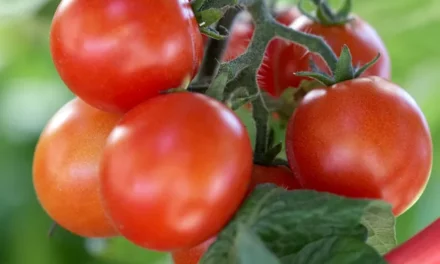Canada’s culinary scene has always been a delightful mix of flavors, cultures, and traditions. From the bustling markets of Toronto to the picturesque landscapes of British Columbia, the country’s food landscape is as diverse as its geography. If you’re wondering about the latest trends in Canadian cuisine, you’re in for a treat. Let’s explore the famous local food updates and discover what’s cooking in the Great White North.
A Taste of Tradition: Classic Canadian Delicacies
Before diving into the latest trends, let’s take a moment to appreciate some of Canada’s enduring classics. Poutine, the quintessential Québécois dish, continues to be a beloved staple. This indulgent combination of fries, cheese curds, and gravy is not just comfort food—it’s an iconic representation of Canadian culture.
Then there’s Nanaimo bars, the sweet treat named after the city on Vancouver Island. These layered bars are a rich, creamy delight that perfectly captures the essence of Canadian desserts.
The Rise of Regional Specialties
As Canadian cuisine evolves, so do the regional specialties that define it. In recent years, we’ve seen an exciting resurgence of local ingredients and dishes that reflect Canada’s diverse culinary heritage.
1. Farm-to-Table Movement
Across Canada, the farm-to-table movement has gained significant traction. Chefs are increasingly sourcing ingredients from local farms, which not only supports local agriculture but also ensures fresher, more flavourful dishes. Expect to see menus featuring seasonal produce, artisanal cheeses, and locally raised meats.
2. Indigenous Ingredients
Another notable trend is the incorporation of Indigenous ingredients into mainstream cuisine. Foods like wild game, berries, and traditional herbs are being celebrated and featured in contemporary dishes. This not only honors Indigenous culinary traditions but also introduces unique flavors to a broader audience.
Fusion Frenzy: Where Cultures Collide
Canada’s multicultural society is reflected in its food trends, with fusion cuisine taking center stage. From Korean BBQ poutine to sushi burritos, the creative blending of flavors and techniques is making waves across the country.
1. Asian-Inspired Innovations
Asian cuisine has had a significant impact on Canadian food trends. Expect to see dishes that combine traditional Canadian ingredients with Asian flavors. For instance, bao buns stuffed with smoked meat or ramen bowls featuring local seafood are becoming increasingly popular.
2. Global Street Food
The global street food trend has also arrived in Canada. Food trucks and pop-up stalls are offering everything from Mexican tacos to Middle Eastern falafel, often with a Canadian twist. It’s a delicious way to experience international flavors without leaving your neighborhood.
Health-Conscious Eating: A Focus on Wellness
As health and wellness continue to be a priority for many Canadians, the food trends reflect this shift. Plant-based diets, low-carb options, and gluten-free alternatives are becoming more prominent on menus across the country.
1. Plant-Based Plates
The plant-based food movement is thriving, with more Canadians opting for vegetarian or vegan options. Restaurants are responding with creative dishes that showcase the versatility of plant-based ingredients. Think hearty lentil stews, flavourful quinoa salads, and innovative vegan desserts.
2. Wellness Foods
Superfoods and functional ingredients are also gaining popularity. Ingredients like chia seeds, spirulina, and matcha are frequently featured in smoothies, bowls, and snacks. These nutrient-packed additions are not only beneficial for health but also add an extra layer of flavor and texture to dishes.
Sustainable Dining: A Step Towards Eco-Friendly Eating
Sustainability is becoming an important aspect of dining, and Canadian restaurants are leading the way in eco-friendly practices. From zero-waste kitchens to sustainable seafood, the focus is on reducing the environmental impact of food production and consumption.
1. Local and Sustainable Seafood
Canada’s seafood industry is embracing sustainable practices, with a growing emphasis on responsibly sourced fish and seafood. This commitment helps to preserve marine ecosystems and ensures that seafood remains a viable option for future generations.
2. Zero-Waste Practices
Many restaurants are adopting zero-waste practices, which involve minimizing food waste and finding creative ways to repurpose ingredients. From composting scraps to using every part of an ingredient, these practices contribute to a more sustainable food system.
The Future of Canadian Cuisine: What’s Next?
As Canadian cuisine continues to evolve, one thing is certain: it will remain as diverse and dynamic as the country itself. The latest trends in famous local food Canada updates are a testament to the creativity and innovation of Canadian chefs and food enthusiasts.
Whether you’re a fan of classic comfort foods or eager to try the latest fusion creations, there’s something for everyone in the ever-changing landscape of Canadian cuisine. So, next time you’re craving a taste of Canada, be sure to explore the latest food trends and savor the unique flavors that define this vibrant culinary scene.
In summary, Canadian cuisine is in a state of constant evolution, embracing both tradition and innovation. With a focus on local ingredients, fusion flavors, and sustainable practices, the food trends in Canada offer a delicious glimpse into the future of dining. As Pritish Kumar Halder aptly puts it, keep your taste buds adventurous and your appetite ready—Canada’s culinary journey is just getting started!











